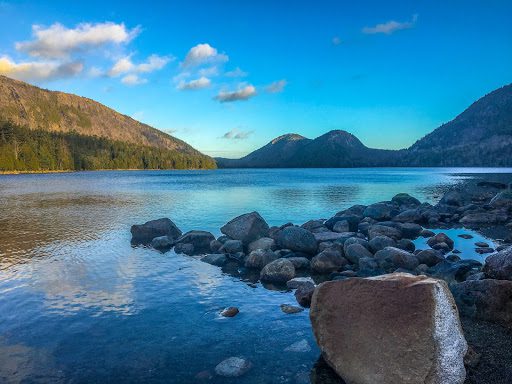One can only imagine what the first European explorers must have thought upon reaching the shores of Northern Maine on the North American Atlantic seaboard.
The jagged rocks and natural jetties inching inland toward dense forests of pine and birch and climbing higher and higher to the bare escarpments of the southern tip of the Acadia mountain range. As the French explorer Samuel de Champlain (widely accepted as the first known European to settle these shores) wrote upon making landfall at Mount Desert Island: “The island is high and notched in places so that from the sea it gives the appearance of a range of seven or eight mountains. The summits are all bare and rocky…I named it “l’Ile des Monts-deserts.”
Of course, de Champlain was nowhere near the first human inhabitant in the area known then as New France and later New England.

Members of the Wabanaki Native American tribes migrated to this stunning and abundant locale in birchbark canoes seasonally to hunt, fish, and harvest the land’s plentiful resources as early as 5,000 years ago. Coastal campsites at places like Somes Sound allowed people to easily hunt sea and land mammals, gather seasonal berries and roots and collect clams and other shellfish. Their legacy still exists in massive deposits of discarded clamshells and bones of the animals and fish the tribes would harvest, the calcium carbonate in the shells neutralizing the acidic Maine soil to preserve the delicate bone and other organic material.
Though the landscape has surely changed in the thousands of years since the Wabanaki people first made berth on these shores and the four hundred or so years after the first European settlers appeared, Acadia National Park still exists as a natural wonder and reminder of the rugged realities and stunning natural wonders of centuries-long past.
This makes Acadia a must-visit for every nature lover.

One of the most popular stops is Bar Harbor. The island town is the park’s main tourist hub, a port of call for whale-watching and sailing tours, lobster shacks, and lodging.
From here one can take a short drive to the start of Park Loop Road, a 27-mile climb to the top of Cadillac Mountain, or hike one of the various trails that lead from Bar Harbor on foot.
After leaving Cadillac Mountain the one-way road loops around to Sand Beach, where travelers can enjoy the cacophonous roar of the water through Thunder Hole and get a sense of the mighty natural power that molded this coastline.
More adventurous visitors may be tempted to venture by kayak, canoe, or low-horsepower motorboat to Jordan Pond and Eagle Lake, just a quick curl around the coast from Sand Beach.
The hiking trails and carriage roads here and throughout the park are open to hikers, bikers, and horseback riders alike.

For those seeking the road less traveled, the area west of Somes Sound features trails along the shore of Long Pond and up Bernard Mountain. Also, down along the coast are Ship Harbor Nature Trail and the clifftop Bass Harbor Head Lighthouse.
Whether one prefers to rest on its beautiful shores and enjoy the roar of the crashing waves or perhaps to test oneself against its rugged terrain, Acadia National Park has something for everyone and should rank at or near the top of every to-do list for the wild at heart.





